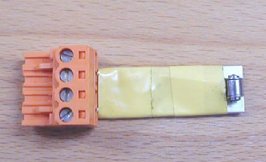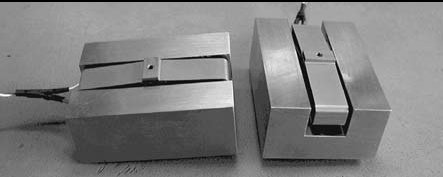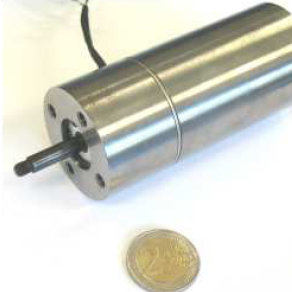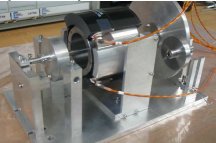Micropositioning
Categories
- (34)
- (9)
- (3)
- (138)
- (18)
- (7)
- (2)
- (5)
- (8)
- (17)
- (1)
- (100)
- (7)
- (12)
- (7)
- (1)
- (1)
- (4)
- (152)
- (19)
- (2)
- (5)
- (111)
- (34)
- (10)
- (4)
- (55)
- (14)
- (3)
- (7)
- (61)
- (17)
- (5)
- (24)
- (7)
- (11)
- (1)
- (2)
- (1)
- (1)
- (1)
- (13)
- (12)
- (4)
- (6)

Bistable micro actuator for energy saving
19 June 2023
The article describes a linear magnetic flip-flop micro actuator, designed with FLUX software, assembled and characterised for a specific application requiring low losses at function states. The micro size allows reducing the energy required for actuation. Permanent magnets ensure bistability and suppress losses at functional states. Although the actuator is less than 1 g, the blocking force is about 0.1N and the stroke is 0.6mm. Firstly, the paper describes the main functionality of the actuator. Then are presented measured characteristics and results are compared with FLUX software computation. Finally perspectives of further miniaturisation are discussed.

Vibration energy harvesting in aircraft using piezoelectric actuators
19 June 2023
In the aicrft vehicle, a part of the produced energy is transformed into mechanical vibration energy losses. This rue is more than ever true when the need for electrucal energy is a crucial problem. So, systems which are able to transform the mechanical energy in a scavenged electrical energy are very interesting.

Active damping of vibrations applied on ski structures
19 June 2023
Since many years the field of active controls of vibration is growing up and a lot of new applications using smart actuators are developed. In the following study, these concepts are adapted and applied on a general structure of ski to damp the large modes of vibrations keeping the robustness of the control and the static loads during the ride.. Simulations integrating FEM models coupling to electromechanical model were elaborated to obtain the principal performances and to study the stability of the loop.

ACTUATOR2008 Moving Iron Controllable Actuators
6 January 2008
To meet the demand of controllable millimeter-stroke actuators, there are two possible starting points. One is to consider improvement of moving coil actuators, the other is to consider improvement of moving iron actuators. Following this approach and using its experience on the different types of magnetic actuators, Cedrat Technologies has developed new specific Moving Iron Controllable Actuators, called MICA. This actuator circumvents previous controllability limitations of standard Moving Iron actuators while keeping their high forces capabilities. Compared with moving coils of the same force, the MICA are twice less in mass while requiring 3 times less electric power. Another significant advantage of the MICA is a much better heat dissipation and reliability as the MICA coil is fixed into the iron stator.

ACTUATOR2008 MRF actuators Abstract
19 June 2023
Short Abstract
The MRF actuators are new electromechanical components using Magneto Rheological Fluids (MRF). When submitted to a high enough magnetic field, MRFs switch from a liquid to an almost solid body. The purpose of the new developed MRF actuators is to reach three aims: to offer a blocking force at rest, which can be strongly reduced by applying a current, to provide an electrically- controllable resistive force over a stroke of 30 mm, to perform the control of the force in a very short time, typically in a few milliseconds.

Limited Angle Torque for fine angular positioning
19 June 2023
A Limited Angle Torque (LAT) actuator has been designed by Cedrat upon request of the European Space Agency (ESA) for fine pointing applications based on gimbals assembly. The required angular stroke for this application is 13°. Other required features are controllability, high resolution, no micro vibration. Therefore the selected concept is a coil-redounded electromagnetic actuator using Lorentz force. The functional test shows that the generated torque is linear until 200mN.m, but torques up to 300mN.m are achievable.

